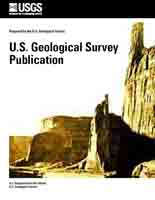Modeling hydrodynamics, temperature, and water quality in Henry Hagg Lake, Oregon, 2000-03
Links
- More information: USGS Index Page (html)
- Document: Report (pdf)
- NGMDB Index Page: National Geologic Map Database Index Page (html)
- Download citation as: RIS | Dublin Core
Abstract
The two-dimensional model CE-QUAL-W2 was used to simulate hydrodynamics, temperature, and water quality in Henry Hagg Lake, Oregon, for the years 2000 through 2003. Input data included lake bathymetry, meteorologic conditions, tributary inflows, tributary temperature and water quality, and lake outflows. Calibrated constituents included lake hydrodynamics, water temperature, orthophosphate, total phosphorus, ammonia, algae, chlorophyll a, zooplankton, and dissolved oxygen. Other simulated constituents included nitrate, dissolved and particulate organic matter, dissolved solids, and suspended sediment. Two algal groups (blue-green algae, and all other algae) were included in the model to simulate the lake’s algal communities. Measured lake stage data were used to calibrate the lake's water balance; calibration of water temperature and water quality relied upon vertical profile data taken in the deepest part of the lake near the dam. The model initially was calibrated with data from 2000-01 and tested with data from 2002-03. Sensitivity tests were performed to examine the response of the model to specific parameters and coefficients, including the light-extinction coefficient, wind speed, tributary inflows of phosphorus, nitrogen and organic matter, sediment oxygen demand, algal growth rates, and zooplankton feeding preference factors.
Study Area
| Publication type | Report |
|---|---|
| Publication Subtype | USGS Numbered Series |
| Title | Modeling hydrodynamics, temperature, and water quality in Henry Hagg Lake, Oregon, 2000-03 |
| Series title | Scientific Investigations Report |
| Series number | 2004-5261 |
| DOI | 10.3133/sir20045261 |
| Year Published | 2005 |
| Language | English |
| Publisher | U.S. Geological Survey |
| Description | vi, 38 p. |
| Country | United States |
| State | Oregon |
| Other Geospatial | Henry Hagg Lake |


